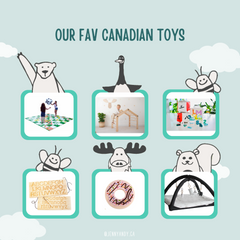
While sensory play is important for all children’s learning and understanding of the world as they grow and reach important developmental milestones, sensory play is particularly important for children with ASD (and other developmental disabilities like Down syndrome) who often have sensory differences as well as challenges with processing sensory information. Keep on reading to find out more about sensory differences in individuals with autism and how sensory play can especially benefit children diagnosed with ASD.
Autism and Sensory Processing

Sensory processing difficulties were first identified by occupational therapist A. Jean Ayres, PhD. According to the Child Mind Institute, in the 1970s, Dr. Ayres introduced the idea that certain people’s brains can’t do what most people take for granted: process all the information coming in through the seven senses to provide a clear picture of what’s happening both internally and externally. Today, we know this as sensory processing disorder (SPD).
When the brain can't process all of the information coming in at the same time, it feels like there’s a traffic jam in your head with conflicting signals coming in all directions. It’s overwhelming and hard to make sense of it all. Most children with autism will exhibit symptoms of SPD. Sensory processing issues can be one of the biggest challenges for people with autism. Many of their day-to-day struggles are associated with difficulty processing and integrating sensory information.
Hypersensitivity
Some people on the autism spectrum may be hypersensitive to sensory stimuli, meaning they are overly responsive to it. Both regular and extreme stimuli, like bright lights or strong smells, can affect hyper-sensitive children, leaving them feeling overwhelmed.
Everyone experiences hypersensitivity sometimes. Imagine trying to sleep and someone's car alarm right outside goes off. That would drive someone crazy! But many people with autism can be ultra-hyper-sensitive in that what is tolerable for most people can send those with SDP over the edge.

Hyposensitivity
Sometimes, people can be hyposensitive, meaning that they are under-responsive to sensory stimuli and may crave sensation (think, when people pace back and forth on the phone).
For those with autism, this can lead to sensory-seeking behaviour such as smelling objects, staring intently at objects, and self-stimulatory behaviours (also known as "stimming"), such as spinning, flapping their hands, flicking, and other repetitive behaviours.
Stimming isn't necessarily a bad thing, but it can distract from learning or may not be appropriate in certain situations. In that case, children who are feeling hyposensitive can get the sensory input they crave in a functional way through activities like massages and, of course, sensory play.

Hypersensitivity and hyposensitivity can co-exist in people with autism. For example, a person may be hypersensitive to loud noises and hyposensitive to tactile sensations that might provide them a sense of calm.
According to research from the University of Pittsburgh School of Medicine, sensory dysregulation is one of the major reasons why people with autism have meltdowns or find it difficult to manage ordinary, everyday situations.
How Sensory Play Benefits Children With Autism

Sensory activities can be effective learning tools that engage all areas of a child’s brain, helping them with their cognitive, emotional, physical, social, and communication development.
For children with autism, engaging in sensory play can help retrain the brain’s response to sensory information, helping them cope better when dealing with different sensory inputs like sounds, textures, lights, scents and taste. Sensory activities can also be calming and motivating for those with autism, and therefore have a big impact for a child’s learning and development.
Here are 8 ways sensory play can be especially beneficial for children with autism:
1. Sensory Play Stimulates The Brain

When a child engages in sensory play, more neural pathways in the brain are created and strengthened. This helps improve the way they process sensory information and leads to greater learning potential. Research also tells us that children learn best when they are using multiple senses at once, also known as “whole body learning”.
Along with skills like problem-solving, creative thinking, and concepts like cause and effect, children with autism can also improve their focus and attention. For example, because children on the spectrum often prefer sensory activities, when they are engaging in the activity, they are also practicing their focus and attention skills that can later generalize and transfer to other activities and settings.
2. Sensory Play Helps With Self-Regulation

Over time, sensory play helps children with autism learn how to respond to sensory stimulation in more positive ways, which boosts their self-control.
Sensory activities are also good at activating a calming stimulus for children with autism, especially for those with sensory processing difficulties. As they put their focus onto the toys or objects and forget about the source of their distress, it allows for the development of self-control, self-regulation, and coping skills.
3. Sensory Play Helps Develop Self-Awareness

For children with autism who have sensitive hands or feet, sensory activities provide opportunities for them to use any non-sensitive parts of their body to build a comfortable relationship between seeing, listening, smelling, tasting, and touching different materials or surfaces. This can help bring their awareness to body parts that they might not have noticed before.
For instance, a child with autism might not enjoy touching sand with their hands, but if we try to get them to touch it with their feet instead, they may appreciate the sensation and gradually progress to touching it with their hands once they feel more comfortable. It can also help in bringing awareness to certain parts of their feet like the spaces between their toes or the weight distribution throughout their feet as they exert pressure on sand.
4. Sensory Play Helps Improve Social Skills

Impairment in social functioning is a central feature of ASD. Typical challenges include: initiating interactions, responding to the initiations of others, maintaining eye contact, sharing enjoyment, interpreting gestures and non-verbal cues, and taking other people's perspectives (also called “theory of mind”).
It’s important to note that individuals with autism don’t necessarily lack an interest in social interactions. Many people with autism do desire social involvement, but may lack the necessary skills to interact effectively.
Sensory play can give children with autism the opportunity to learn and practice these skills. Since sensory play helps with self-regulation and calms them down, it can help children with autism be more ready and receptive to new experiences, including socializing and interacting, but in an environment/activity in which they feel more comfortable and regulated.
Although children with autism might initially only engage in parallel play (playing side by side), they can progress to more cooperative play with time and guidance, and sensory play is an engaging and motivating place to start. With further support by caretakers and educators, children can practice social skills like waiting, turn-taking, sharing, and requesting and exchanging toys with others.
Social development is so important to help individuals with autism create and maintain meaningful and fulfilling relationships.
5. Sensory Play Helps Develop Language Skills

Along with social challenges, many children with autism also face language and communication challenges. Sensory exploration can provide opportunities to stimulate language within a functional and meaningful context.
For a child, the ability to be able to touch, smell, taste, hear, and see different objects and materials is how they best learn to develop thoughts, feelings, comparisons, and language associated with those objects.
Messy, sensory activities lends itself really well to expose children to language and vocabulary. Children can learn a plethora of words and concepts like “cold”, “wet”, “sticky”, “pour”, “mix”, “stir”, “splash”, “scoop”, “in”, “out”, to name a few.
6. Sensory Play Improves Motor Skills and Coordination

Children with autism can practice fine motor skills through sensory play when they squeeze, pull, open and close their hands to release, and manipulate tools to scoop, transfer, and pour water, slime, playdough, and sand.
Manipulating small objects in this way not only helps strengthen the muscles in a child’s hands and wrists, but also helps with hand-eye coordination and bilateral coordination (coordinating both sides of the body).
7. Sensory Play Is Inclusive

Because there’s no right or wrong way to engage in sensory play, it encourages inclusion. Inclusive play ensures that all children have the opportunity to play together side by side.
Not only is this important for learning and developing skills, but also for reminding neurodivergent children, such as children with autism, ADHD, or Down syndrome, that they are equals and that they belong. Boosting their self-image and self-confidence is fundamental.
8. Sensory Play Is Fun!
And last but not least - sensory play is fun and therefore motivating! Play is the natural way for children to communicate, learn, and understand the world. We know that sensory play is preferred and motivating for most children with autism, and without motivation, learning cannot happen.
Check out Jenny & Andy's Intro Toy Bundle for sensory toys that accomplish the goals mentioned above. Jenny & Andy's cube toy pictured above is soft and squishable and contains a gentle bell that's great for teaching early learners about cause and effect.
About the author:
Sam is trained as a speech therapy associate and behaviour therapist who spent 5 years working with young toddlers with autism and other exceptionalities and their families.
Her therapy sessions required her to work collaboratively with Speech-Language Pathologists, Board Certified Behaviour Therapists, Occupational Therapists, Teachers, and Registered Early Childhood Educators.
Sources:
- Autism Ontario (2011). SOCIAL MATTERS: Improving Social Skills Interventions for Ontarians with ASD.
- Child Mind Institute. Sensory Processing Issues Explained.
- Harvard Health Publishing (2021). What is neurodiversity?
- HealthLinkBC (2020). Sensory Processing Disorder.
- Marco, Elysa J et al (2011). Sensory processing in autism: a review of neurophysiologic findings. Pediatric research vol. 69. doi:10.1203/PDR.0b013e3182130c54
- Suarez MA (2012). Sensory processing in children with autism spectrum disorders and impact on functioning. Pediatr Clin North Am. doi:10.1016/j.pcl.2011.10.012




